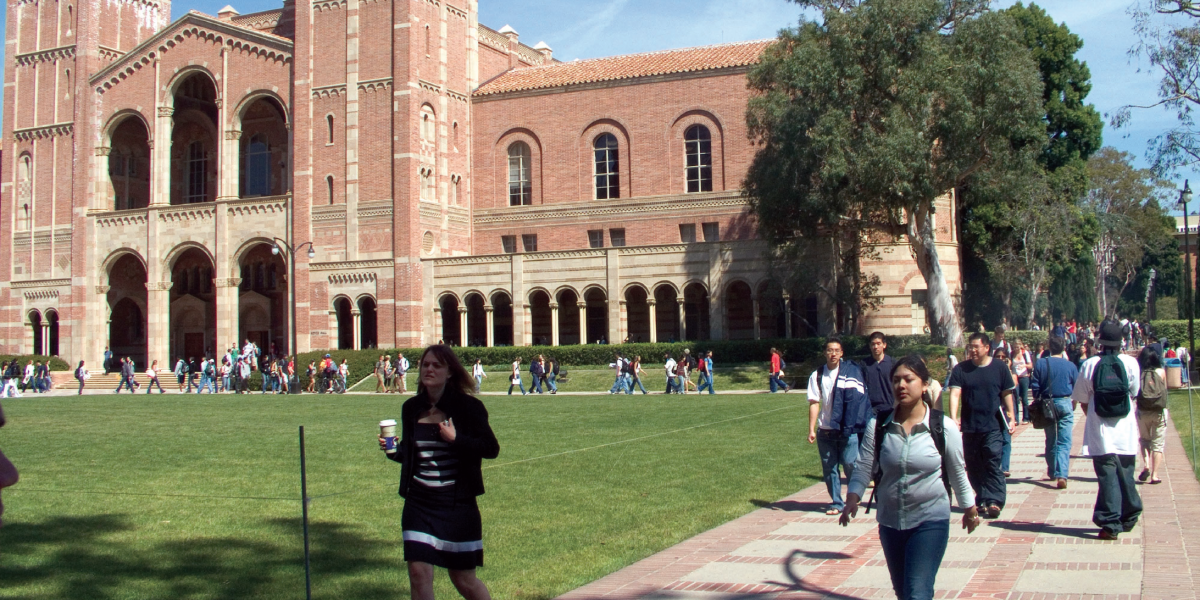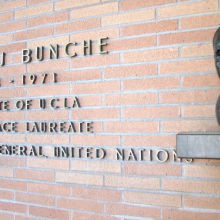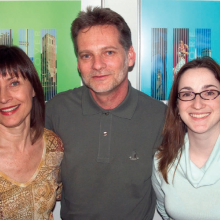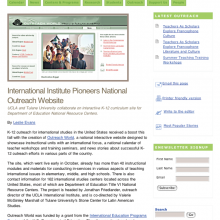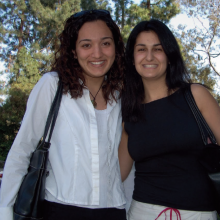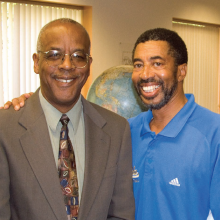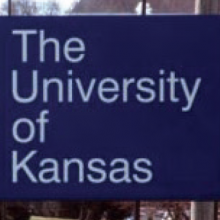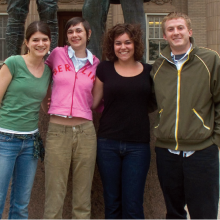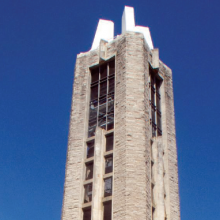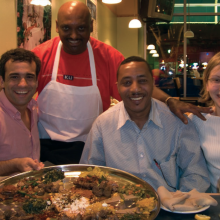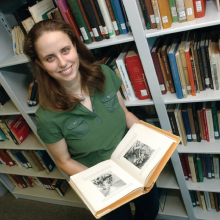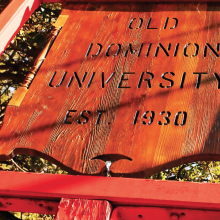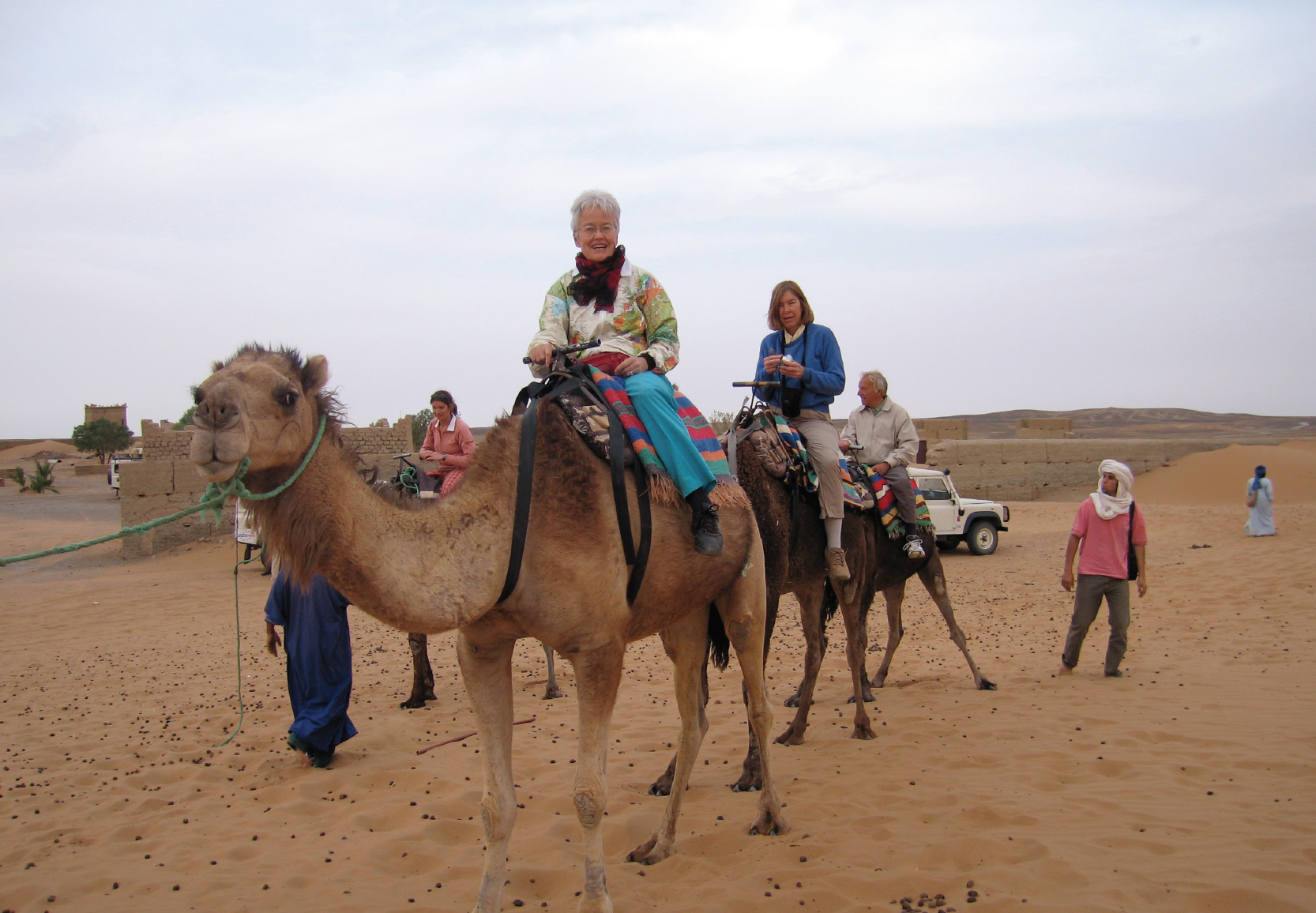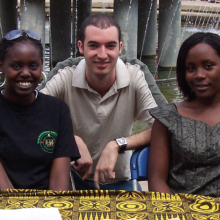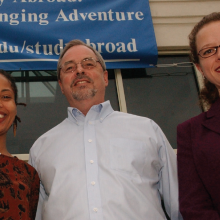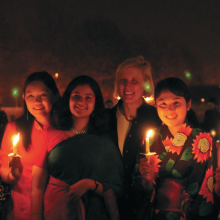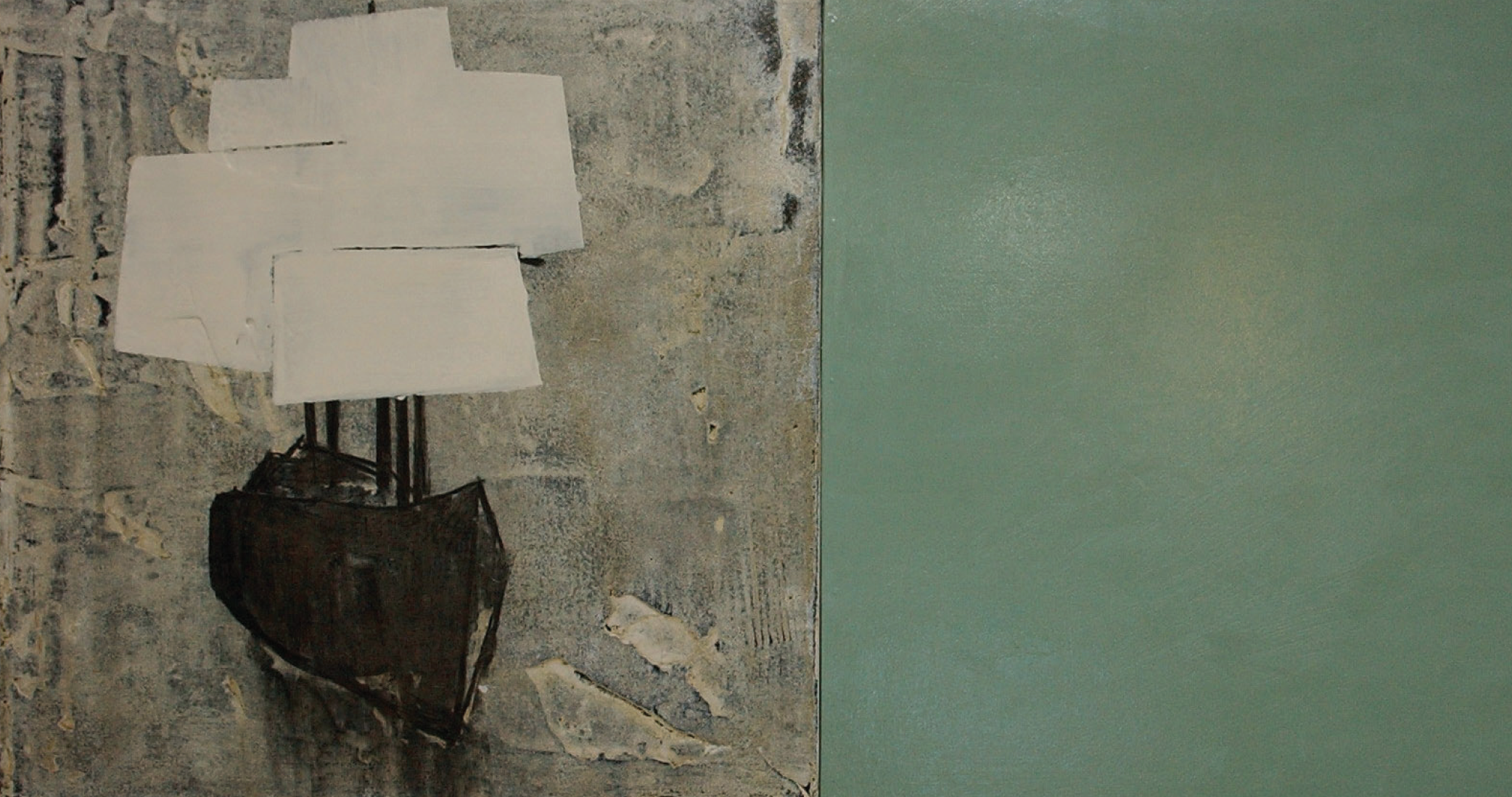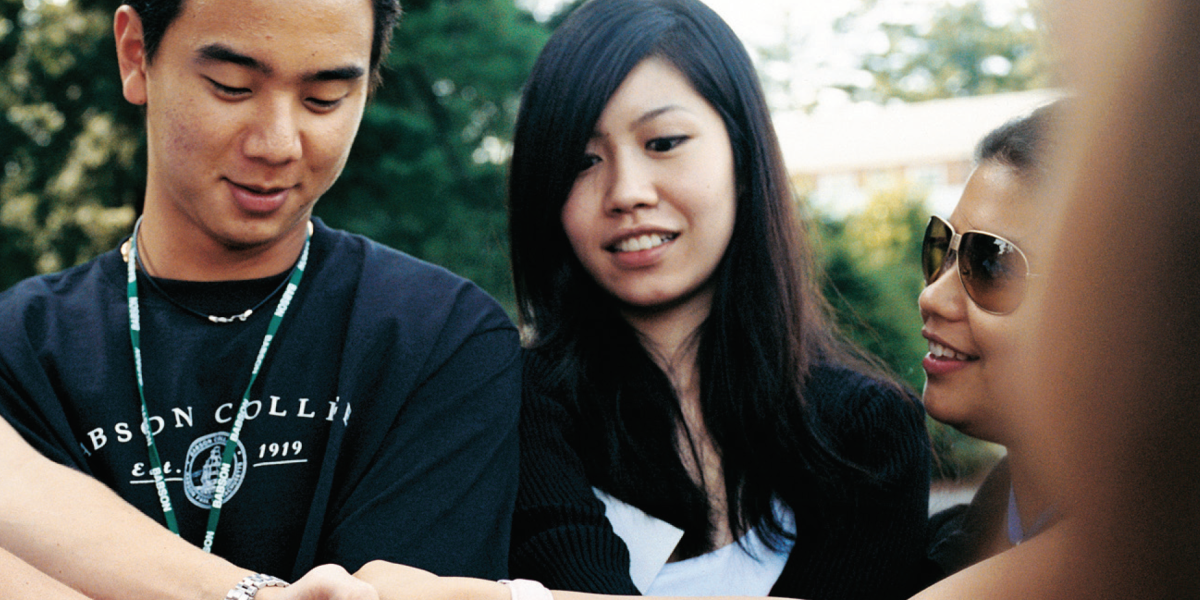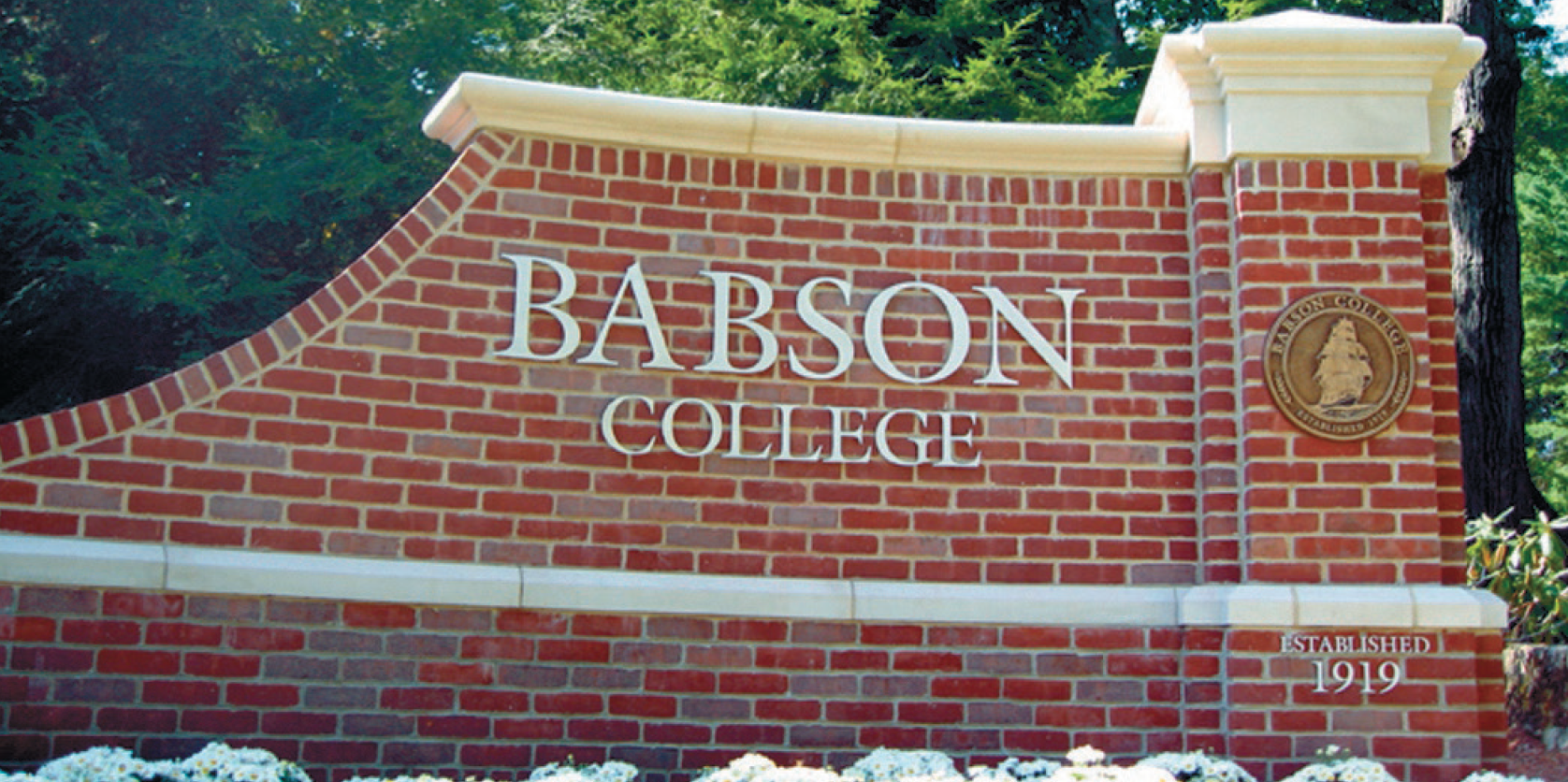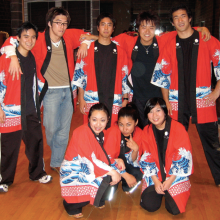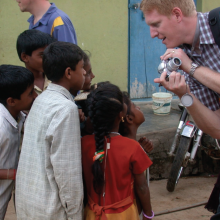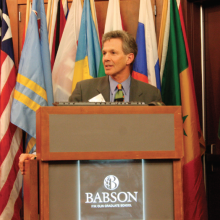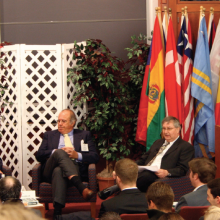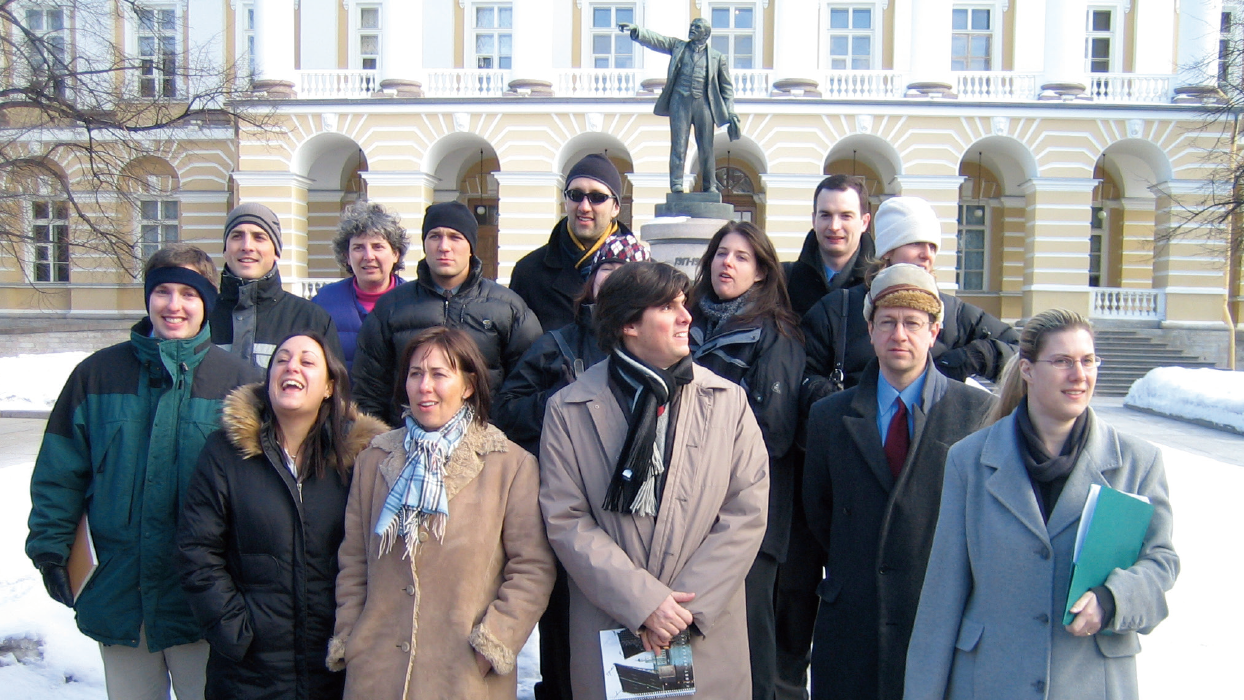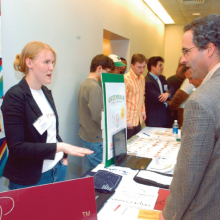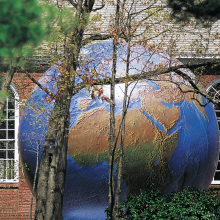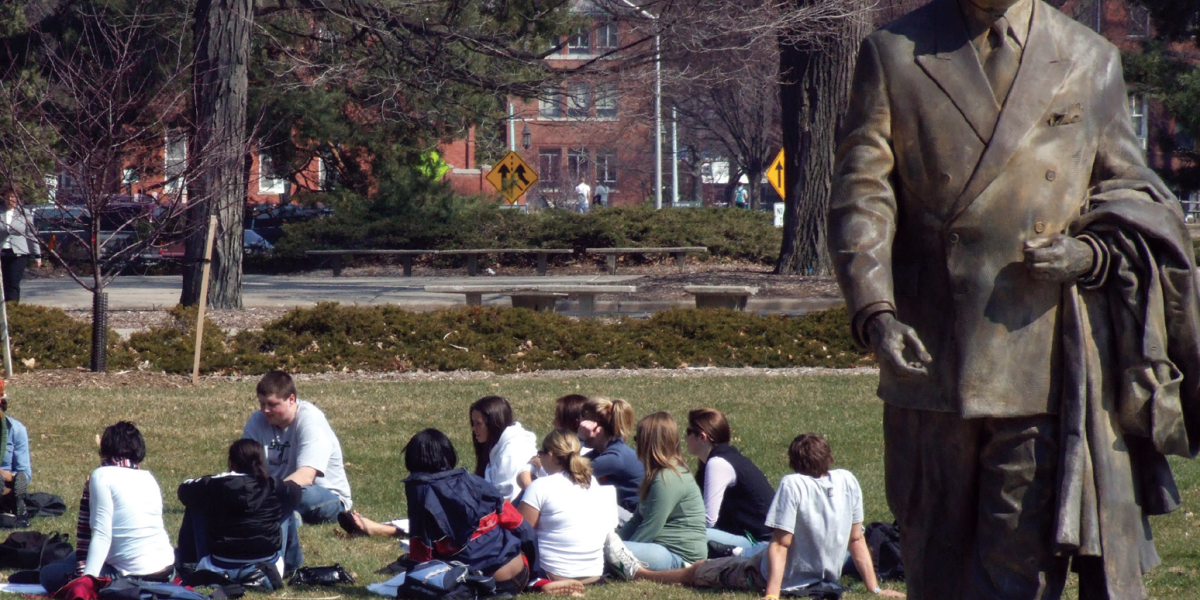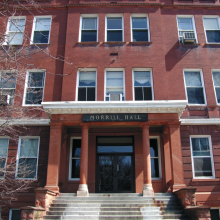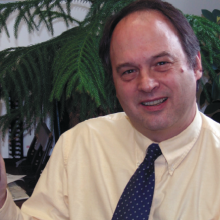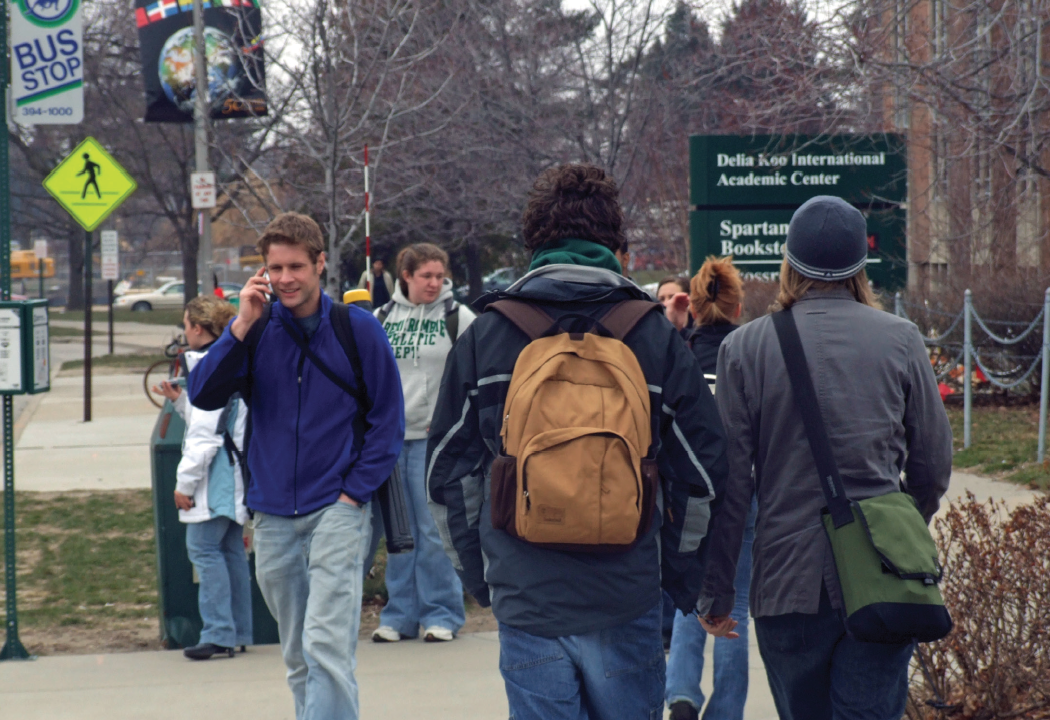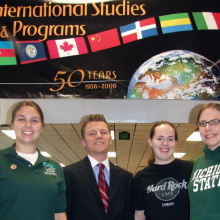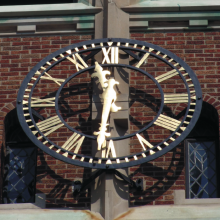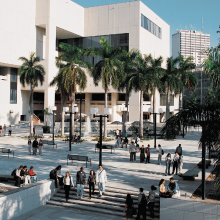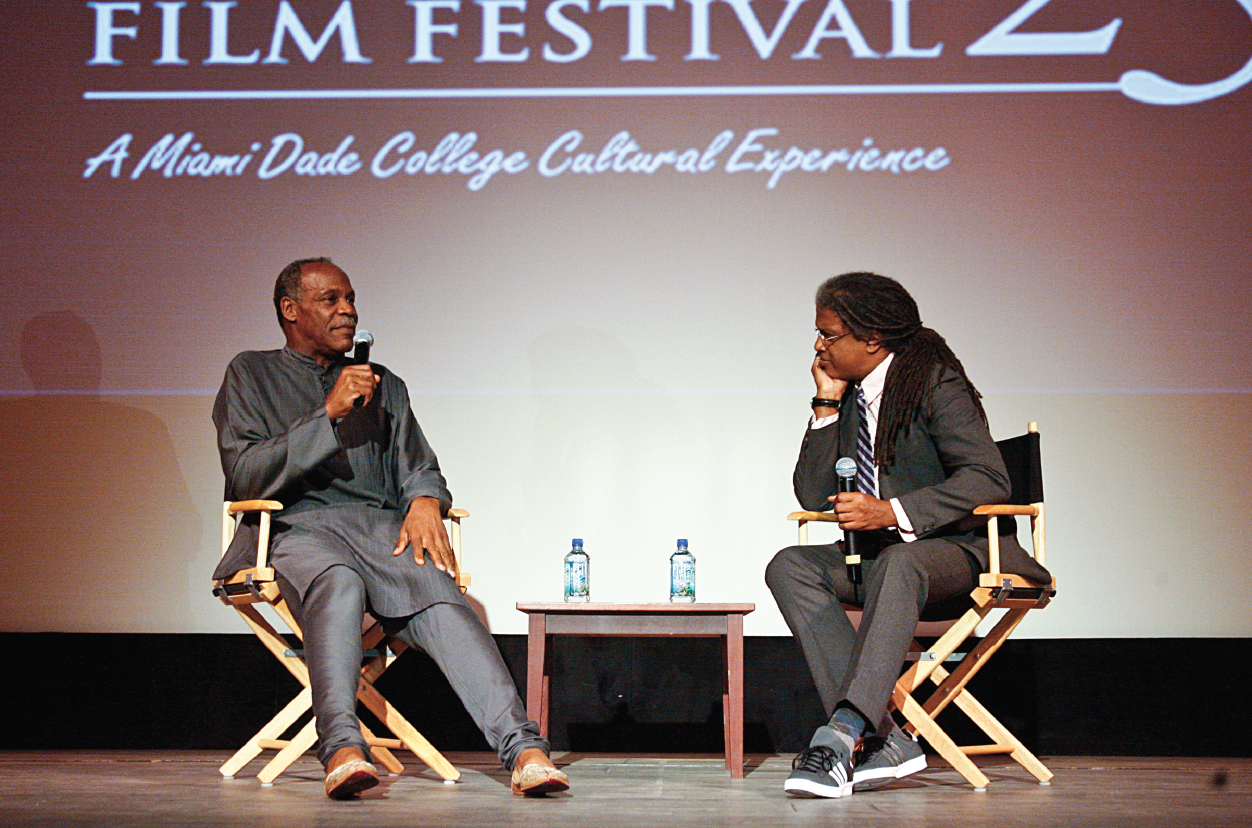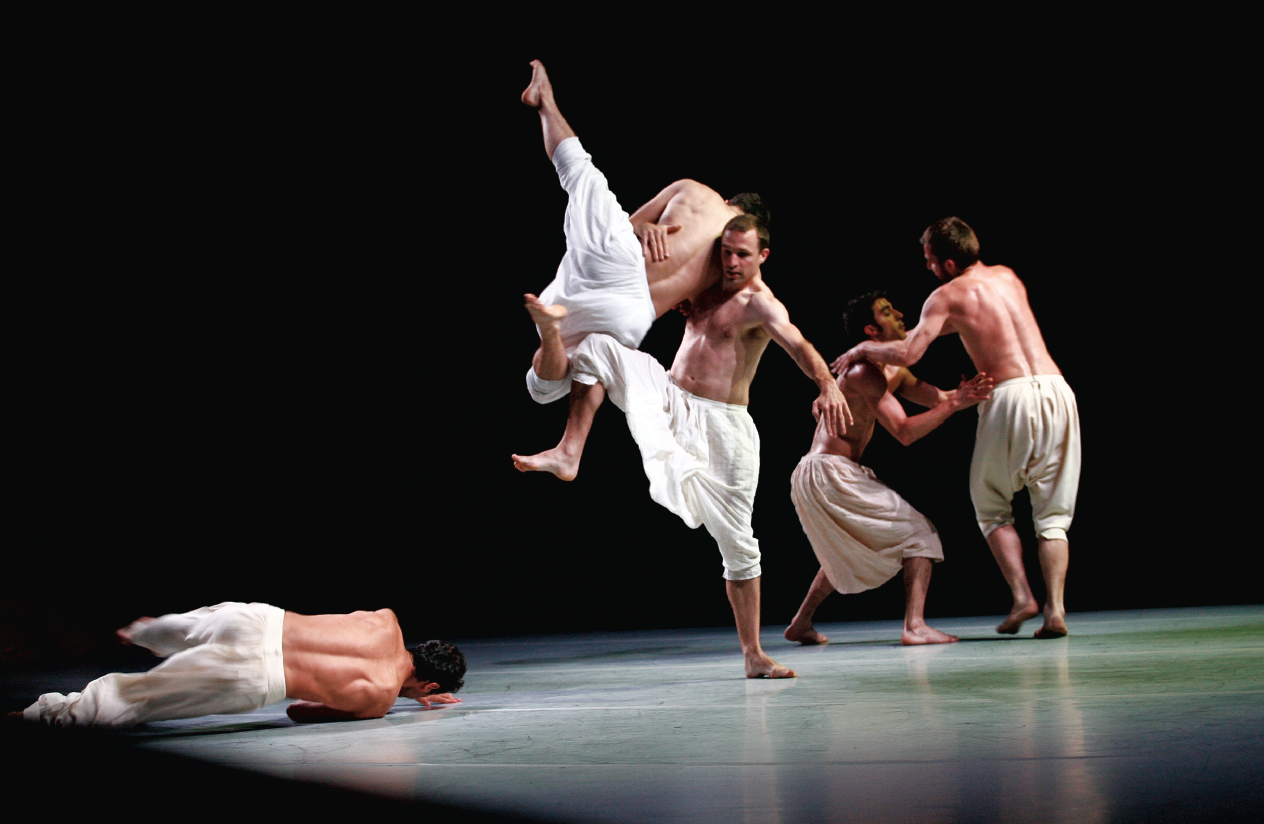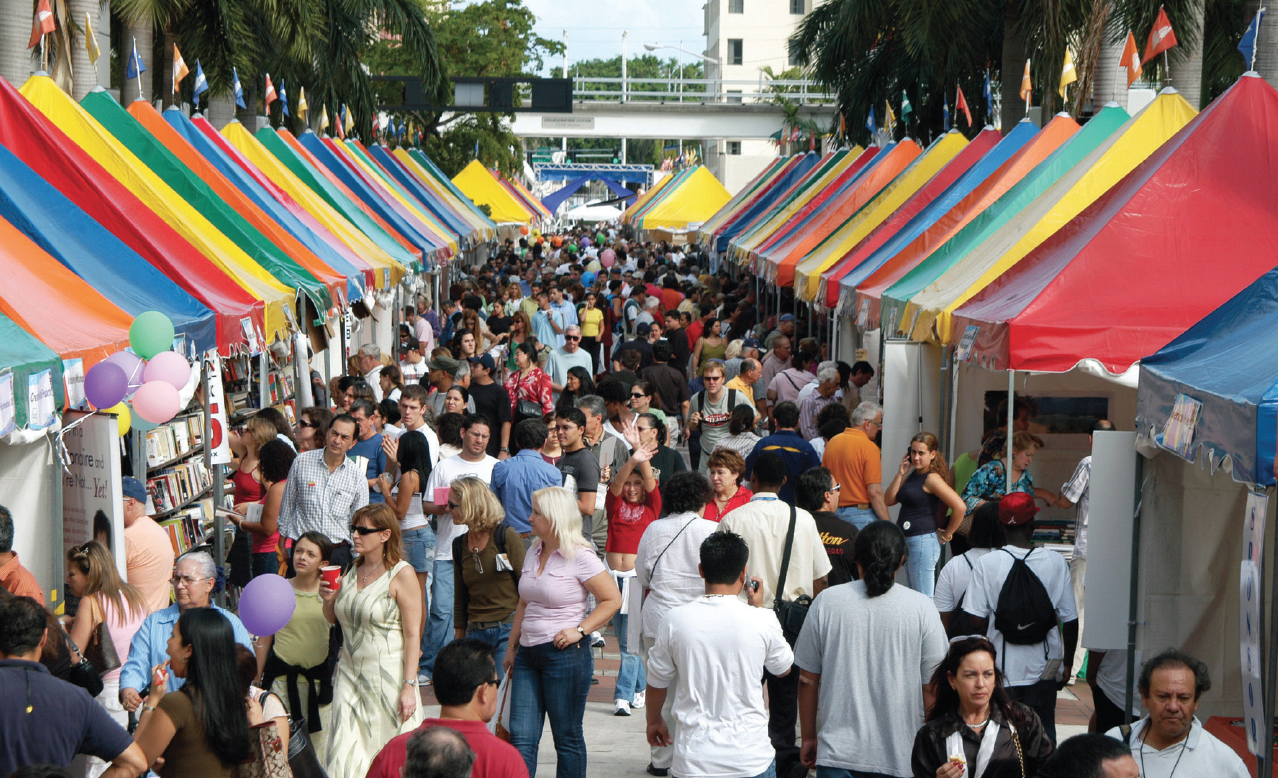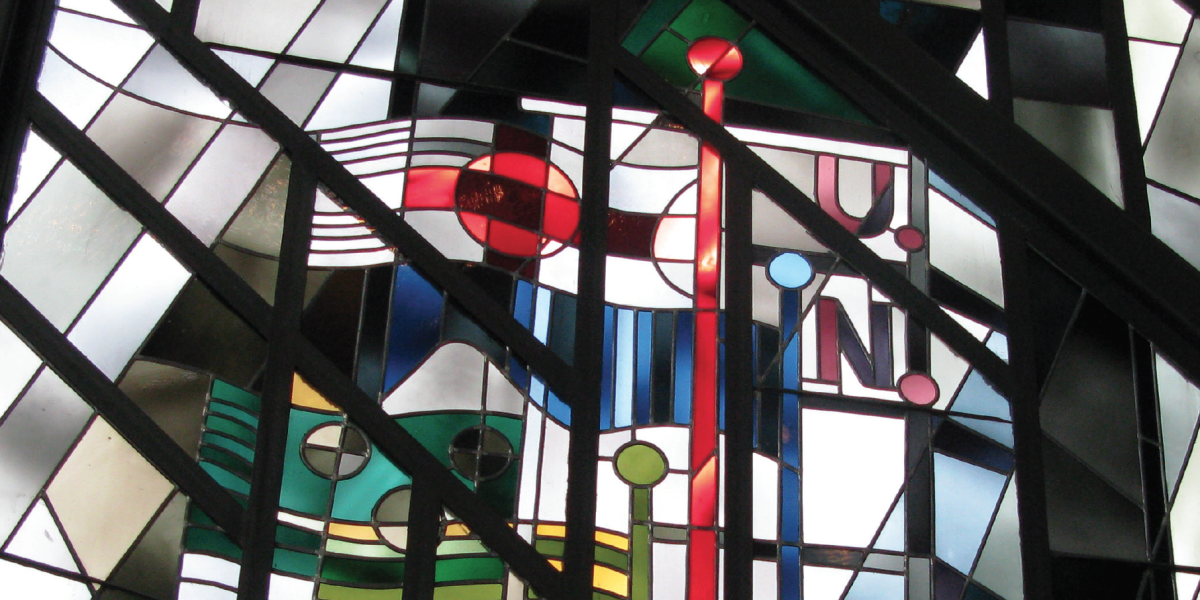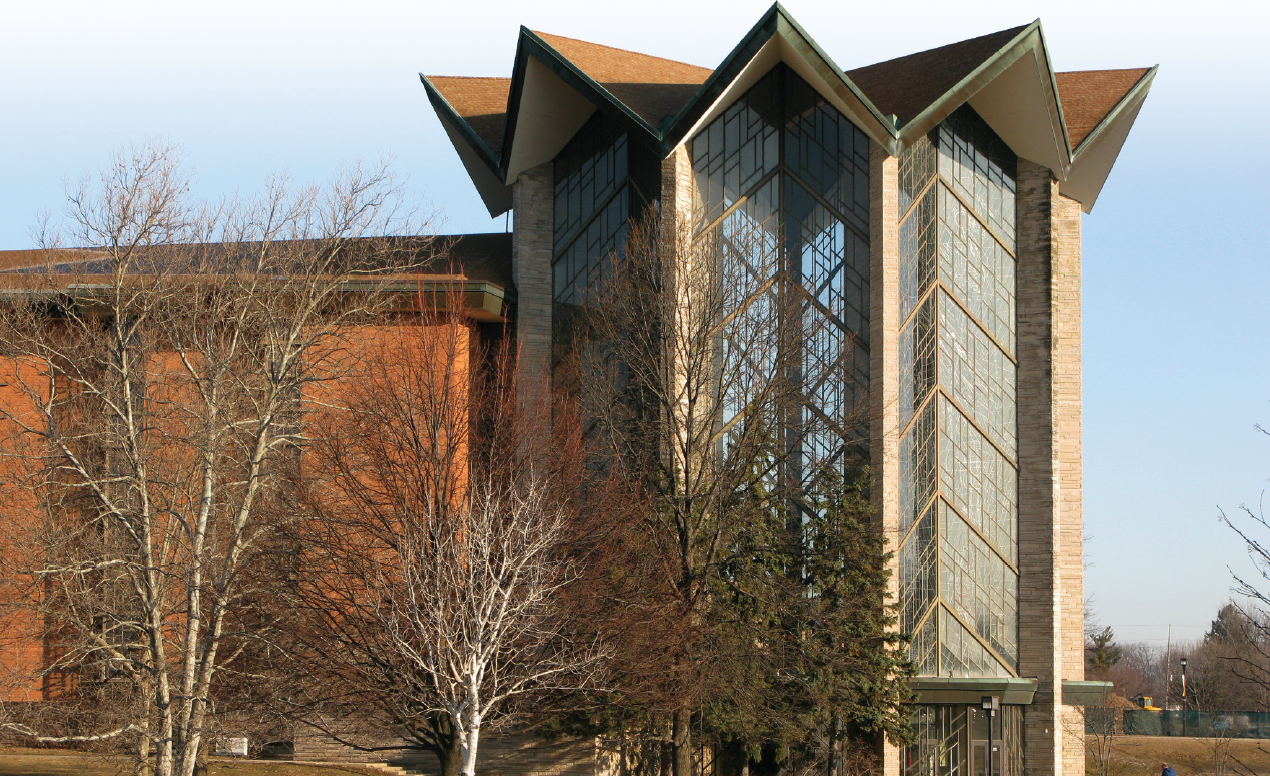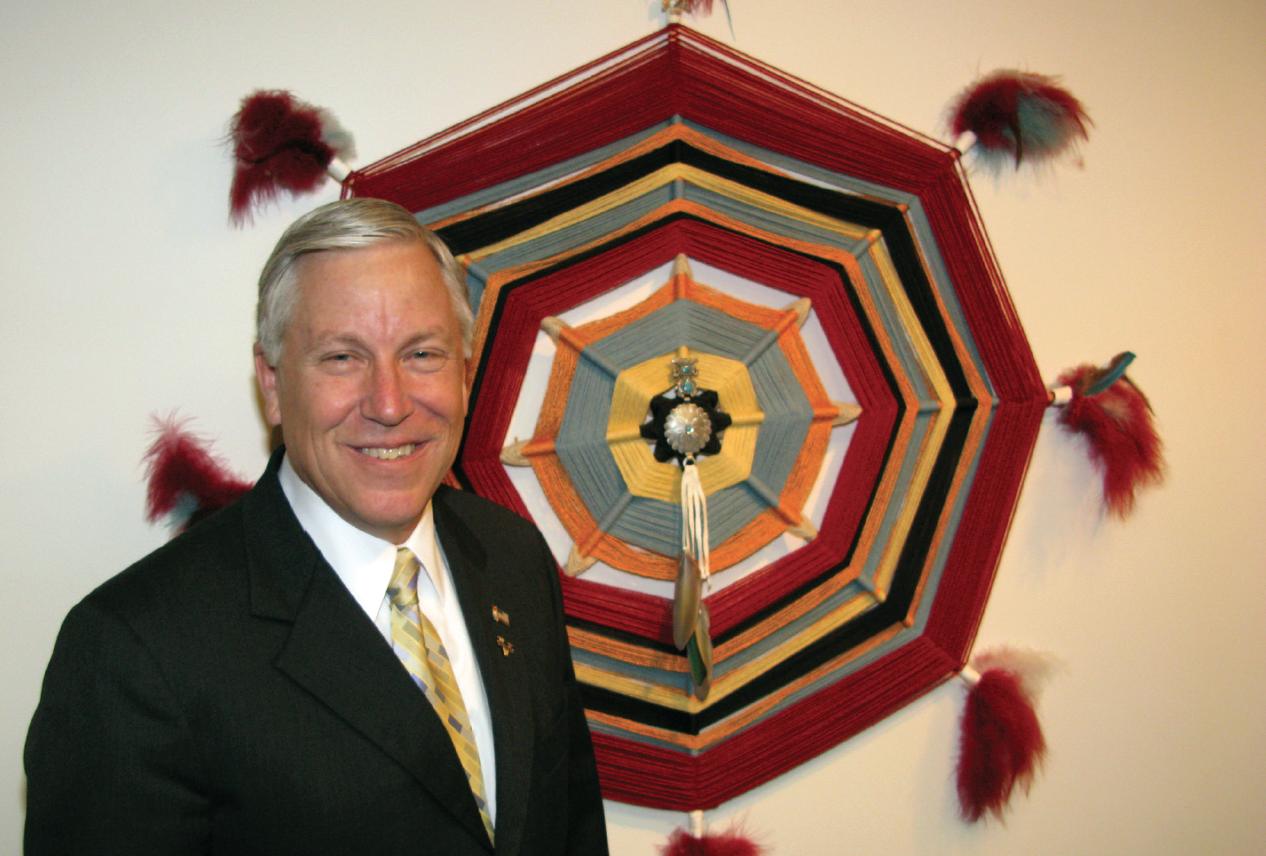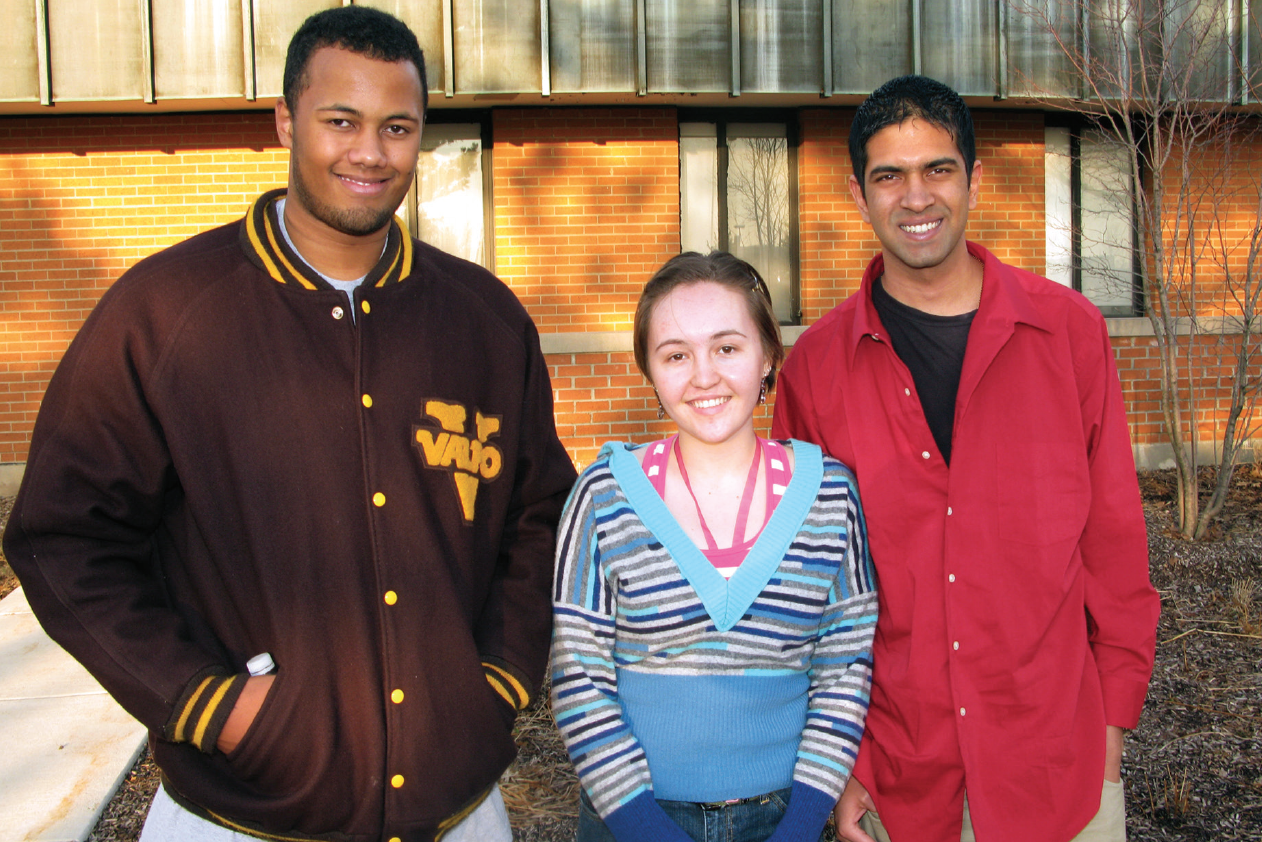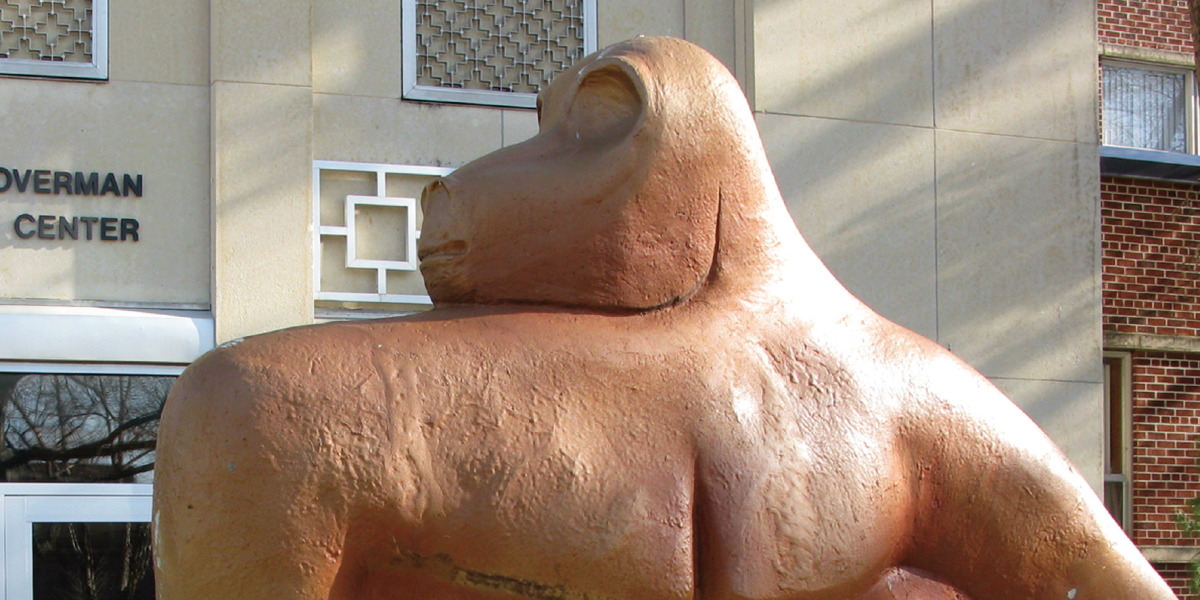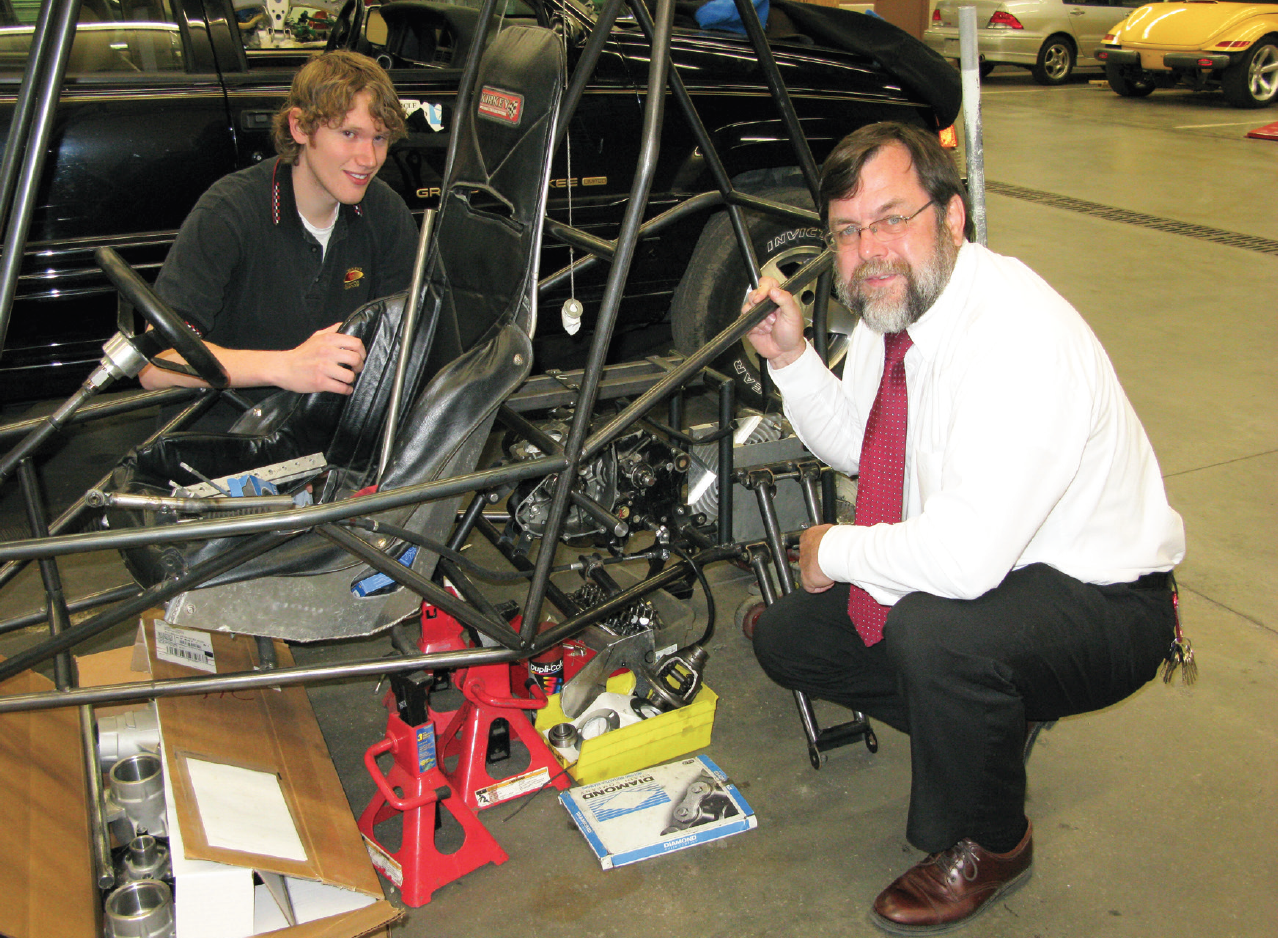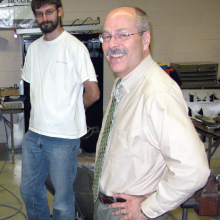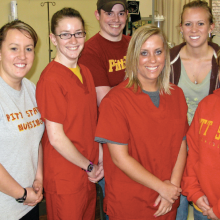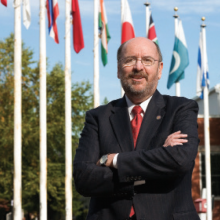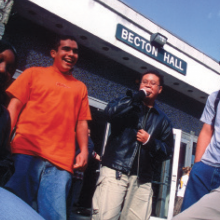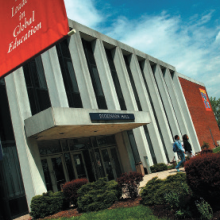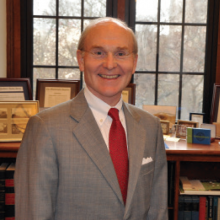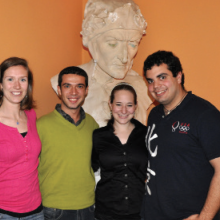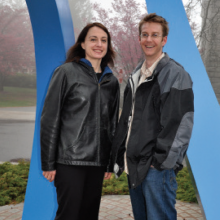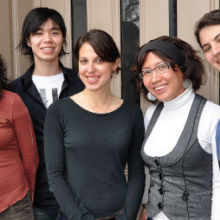2005 Comprehensive UCLA
In the higher education world, college and university rankings are a source of endless fascination and endless frustration for administrations and admissions officers. They come in all sizes and shapes, some with impressive imprimaturs (i.e., the National Research Council’s periodic ratings of graduate programs) and others that mix a scintilla of scientific precision with an overlay of academics’ opinions and impressions (i.e., U.S. News & World Report’s cottage industry of rankings). There is one common denominator that binds together most of America’s greatest research campuses, public and private: they belong to the Association of American Universities, an organization of 62 leading North American universities—60 in the United States and two in Canada—whose members award half the doctoral degrees and account for 55 percent of the research in the United States each year. Its roster is often regarded as a Who’s Who of North America’s greatest universities.
The University of California at Los Angeles won admission to AAU’s exclusive ranks in 1974 (74 years after the University of California at Berkeley, one of the founders), and UCLA Chancellor Albert Carnesale often makes the largely unassailable observation that his institution can lay claim to this title: the best comprehensive, public university in any of America’s largest cities. “If you stop and think about it, UCLA is quite unusual in that sense,” said Carnesale, a onetime nuclear engineer who redirected his career and scholarly passion into public policy work after participating in the original Strategic Arms Limitation Treaty (SALT) talks 35 years ago. “It’s not New York. It’s not Boston. They have great universities, but they are not public. It’s not Chicago. It’s not San Francisco. Berkeley’s at Berkeley. You start going down the list, and they don’t have great public universities in the (big) cities.” There’s the University of Washington on the lakefront in Seattle, a city of 563,000, and the University of Texas at Austin, in the Texas capital, where 656,000 people dwell—but neither comes close to the population of the City of Angels (3.8 million). The handful of public universities with reputations as large or larger than UCLA’s are in smaller places, from Chapel Hill, North Carolina, and Charlottesville, Virginia, to Ann Arbor, Michigan, and Madison, Wisconsin. (And, of course, in the aforementioned Berkeley, population 102,000.) This New York City and Cambridge, Massachusetts, expatriate now has this to say about his adopted hometown: “Los Angeles is perhaps the most exciting, dynamic, global city anywhere, not just in the United States.”
College presidents and university chancellors everywhere are nothing if not super salespersons for the place they call home. The 69-year-old Carnesale is a proud, purposeful, and extraordinarily successful pitchman. Since moving west in 1997 after 23 years at Harvard University—where he was professor, dean of the Kennedy School of Government, and provost—Carnesale has helped UCLA raise upwards of $2.5 billion—more than any public university, and $3 billion is in sight before he steps down as chancellor in June 2006 to resume teaching. Carnesale marshals these arguments for a point: UCLA is a very international, interdisciplinary university that happens to sit in the middle of one of the most multicultural, polyglot cities in the world.
Leaders for an Interconnected Global World
Now, “urban” isn’t the first word that comes to mind upon stepping foot on UCLA’s gorgeous Westwood campus, a few miles south of the HOLLYWOOD sign and a few miles east of the Santa Monica beaches. But “international” is. With five Nobel Laureates on the faculty, and four others among its 330,000 alumni—including Ralph Bunche ’26, the scholar-athlete who won the Nobel Peace Prize in 1950 for brokering a truce between Arabs and Jews in the Middle east—and with 38,000 students and a faculty of 3,300, UCLA is deeply involved in international education and research. As Carnesale wrote in an introduction to UCLA’s global programs and activities for UCLA Magazine (Winter 2004), “At UCLA, scholars from a wide range of disciplines prepare the next generation of leaders who will not only be outstanding scientists, teachers, artists and citizens, but who also will function effectively in an interconnected global world.”
Carrying the banner and providing the central administrative and intellectual focus for these activities is the UCLA International Institute, which occupies two upper floors of Ralph Bunche Hall on the compact campus (among the nine University of California institutions, UCLA has the curious distinction of having the largest enrollment and the smallest campus—419 acres). Under the purview of the International Institute are 15 research centers and separate programs on almost all regions of the globe, nine interdisciplinary degree programs, including a new, enormously poplar Global Studies major; language studies (UCLA regularly teaches more than 40 languages, including Afrikaans, Hausa, Quechua, Bashkir, Uzbek, and Catalan), study abroad, community outreach, and numerous global research initiatives. The Burkle Center for International Relations brings national and international leaders in business, government, education, and civic life to campus and holds forums addressing public policy conundrums.
Geoffrey Garrett, who served as vice provost and dean of the International Institute from 2001-2005, said, “It is very arguably the case that UCLA has more and higher quality faculty in international studies than anywhere else in the United States.” He acknowledged that some might argue that that distinction belongs to the University of Michigan or Berkeley, “but I would make the case that we’re bigger and better than both in international. And none of the privates with the possible exception of Harvard can match our scope.” (Garrett recently moved across town to assume the presidency of the Pacific Council on International Policy at the University of Southern California.)
The numbers bear out Garrett’s claim. In the 2004 Open Doors report, UCLA led all public institutions in the number of students’ studying abroad: 1,917 in 2003–2003 (only New York University sent more: 2,061). Many go through the Education Abroad Program Office which, working through the University of California System EAP office in Santa Barbara, places students at more than 140 institutions in 33 countries. A large and growing number head overseas each summer in travel study programs led by UCLA faculty. The Summer Sessions and Special Projects office enrolled a record 969 students in 29 programs around the world in summer 2005. And UCLA has a separate office that arranges internships and service opportunities and helps other students directly enroll in scores of universities overseas. The Anderson School of Management arranges exchanges each fall for 60 second-year MBA students, at the same time hosting as many from 47 international business schools.
“The exchange program is a big selling point for us in our recruiting for this school,” said Susan Corley, director of student services for the UCLA Anderson School of Management.
Not content with the existing cornucopia of study abroad offerings, UCLA launched in 2004 an intensive new summer model that sent 25 students to Tongji University in Shanghai to study Asia’s emerging economies for a month. In 2005 the International Institute expanded this new Global Learning Institute to offer summer classes at host universities in Hong Kong, Vienna, and Guanajuato, a colonial town in Mexico, and more are in the offing.
“We’re not trying to duplicate existing opportunities or denigrate the traditional model… but it’s time to expand opportunities,” said Garrett, an Australian-born political economist and authority on the globalization of markets.
Last spring more than 400 students signed up for UCLA’s first Global Studies class. Guest lecturers include Chancellor Carnesale—who regularly teaches and lectures at UCLA about disarmament and international relations—former U.S. Secretary of State Warren Christopher, and former U.S. Trade Representative Mickey Kantor.
Political Science Professor Steven L. Spiegel, the associate director of the Burkle Center and a Middle East expert, said all top universities have international relations centers, but UCLA’s has “a unique combination of breadth and depth.”
Spiegel joined the UCLA faculty in 1966 after completing graduate work at Harvard. “It’s a much bigger and much more complicated place today,” he said. “UCLA has very broad regional interests. It clearly has the top Middle East program west of Chicago.” It has Arabists, for instance, in anthropology, sociology, and political science as well as in language studies. Ironically, he said, decades ago when Berkeley and UCLA decided to divide the world for the purpose of area studies, Berkeley took Europe and Asia—then of foremost interest to the United States—while UCLA got the Middle East and Africa. “In a way, they were sops to the second rung school. Now the Middle East is the number 1 issue,” said Spiegel (both UC schools now cover all these areas).
Nearly 600 UCLA undergraduates and 150 graduate students are pursuing degrees in the International Institute’s degree programs, which include a Ph.D. in Islamic Studies.
“I’ve tried to create a two-dimensional intellectual architecture for the International Institute,” said Garrett. “One dimension, the pillars, is area studies the way we’ve always done it.” The second dimension “is where you wave these big global themes—global studies, migration studies, international development studies— among the area pillars.”
Political scientist Ronald Rogowski, a son of Nebraska sharecroppers who is an authority on international trade and a champion of interdisciplinary work, is UCLA’s new interim vice provost and dean of the International Institute. He was already serving as the institute’s associate dean and had played a key role in bringing in its first class of Global Fellows—promising young scholars at early stages of their career who get to spend a year on the Westwood campus pursuing international research and teaching seminars— as well as reshaping its Islamic Studies program and opening a new Center for India and South Asia.
Issues in the Developing World
International Development Studies, which examines the problems and issues faced by the world’s poorest countries, attracted 25 majors when it started in the 1980s. Today it is a virtual behemoth with 350 majors. Its director, Michael Ross, an associate professor of Political Science, said, “It’s a great program for students who want to spend time in a developing country and learn that country’s language, and who are interested in real world political and economic issues.”
Ross, whose specialty is researching the protection and destruction of natural resources in such developing countries as Indonesia, Malaysia, and the Philippines, said the program’s majors are undaunted by rigorous requirements, including two years of language and a capstone senior seminar that requires significant research. “Most of our students spend from a summer to a year abroad. A lot, given the make-up of Los Angeles, will go to Latin America or Asia,” where they have family roots, he said.
“For what I do—the study of politics in the developing world— UCLA is the best place in the country,” said Ross, once a senior congressional aide to then-Rep. Barbara Boxer (D-Calif.) and the late Rep. Ted Weiss (D-New York).
Public and Social Policy Studies
A young faculty star, Amy Zegart, assistant professor of Policy Studies at the School of Public Policy and Social Research, has connections on the other side of the political fence in Washington. Amy Zegart is an expert on the CIA and national security issues; her thesis adviser at Stanford was Condoleezza Rice, now the secretary of state. Zegart was one of the “Young Turks” in academe that the Bush campaign drew on for foreign policy advice in the 2000 presidential race. Zegart’s 2000 book, Flawed By Design: The Evolution of the CIA, JCS and NSC, became required reading in Washington after 9/11.
Zegart, who spent three years as a McKinsey & Co. consultant before taking the UCLA job, said, “I joke that anything scary I’m naturally interested in. I’ve always been fascinated by politics, conflicts, foreign policy.”
The Harvard and Stanford graduate said, “One of the great joys coming here was the satisfaction of the mission of the public university. I have incredible students. One woman’s parents never finished high school in Mexico. She was in my seminar and now she’s in graduate study in international relations. It’s really exciting to teach kids from all these different backgrounds and to see them light up and to open doors for them.”
Zegart also savors the international flavor of UCLA and Los Angeles. “You can’t help but be acutely aware that we are part of a broader international community. I hear Spanish all over the place. My 5-year-old is learning Spanish,” she said. “The borders are porous and you sense that every day living in Los Angeles. There is an excitement about that, too.”
In six years on the faculty, she has witnessed a dramatic growth in student interest in foreign policy issues. Of course, she added, “in California, local issues are international issues, too: whether immigrants can get free medical care, whether they can go to public school, whether they can have a driver’s license. Students today are much more aware of the world than when I started college 20 years ago.”
Getting Students Out Into the World
Ninety percent of the undergraduates at UCLA are Californians (the same is true at Berkeley and other UC campuses); only 2 percent are international students. The graduate student population is far more international. In Fall 2002, 1,700 of UCLA’s 2,400 international students were pursuing graduate studies.
Chancellor Carnesale says that the 90 percent Californian statistic can be misleading. “A remarkably high proportion have at least one parent born offshore, and many of them were as well. They bring two cultures to the party,” he said.
Still, it explains why UCLA places such heavy emphasis on study abroad. “If it’s harder for us to get foreign students on campus, what we have to do is think really creatively about how to get our students out into the world,” said Garrett.
Garrett said it was his aim at UCLA to provide more options for students to study abroad, and to make it easier for them to apply credits earned abroad to their major. “We have two polar models at the moment. At one end of the spectrum is the classic [education abroad] immersion program where you pick up a student in Westwood and drop them down in the University of Beijing. They take courses with Chinese students taught by Chinese professors, and that’s great, and then they come back and they have to haggle with the Political Science department to see if they can get credit for that stuff toward their major. It takes a lot of time, a lot of individual counseling.”
At the other end of the spectrum, he said, is travel study, usually taking place over the summer, “A UCLA professor teaching a UCLA class takes students to Stratford-on-Avon and they teach Shakespeare,” said Garrett. They are guaranteed UCLA credit, but there is no guarantee that they will gain much international exposure during weeks spent on trains and in hotels with UCLA classmates.
Global Learning Institutes
That is why the International Institute has developed the Global Learning Institutes, which Garrett said offer “the best features of both models. We’re partnering with foreign universities to allow our students to take courses taught not only by UCLA faculty, but team taught with local faculty. The students will live in dormitories with local students and other foreign students who are there.”
“You have all these global themes in the world these days—markets, democratization, culture, and identity—[but] they play out very differently in different parts of the world,” said Garrett. Globalization looks very different in Shanghai, in the midst of the Chinese economic boom, than it does in Mexico, where “people are very dispirited… about how they were going to benefit from NAFTA and opening to the rest of the world. It’s very important for our students to understand that even if these things are a global phenomenon in some sense, the local realities are very different.”
Nick Steele ’05 of Long Beach, California, went on the inaugural Global Learning Initiative trip to Shanghai last summer. He got a scholarship from the International Institute, and it also helped him and three other students land August internships at a Shanghai consulting firm. “There’s so much going on at UCLA,” said Steele, 21, a leader of the Undergraduate International Relations Society. “I The UCLA International Institute excels at outreach—outreach to the citizens of Los Angeles, and outreach to scholars and ordinary people around the world. It has long been involved in providing seminars and training for K-12 teachers on international issues. In recent years it has supplemented the classroom sessions with superb, savvy, and resource-rich Web sitesnever would have been able to find that internship on my own.” After graduating in May, he headed to Hong Kong to teach English.
Integrating Internationalization
Throughout the Curriculum The International Institute boasts a $15 million budget and extensive connections with virtually every academic unit on the Westwood campus—not just the political scientists, economists, and anthropologists, but with professors from the School of Theater, Film and Television, the School of the Arts and Architecture, and many other disciplines. “People in the film school are very interested in China, and I’m working closely at the moment with people in Arts & Architecture about the Middle East. Our Public Health schools work all over Asia, Africa, and the Middle East,” said Garrett. “We have Music, Ethnomusicology, and Musicology here, three [separate] departments. We have Art and we have Art History. We don’t have a shortage of resources. It’s getting them all together.”
Before the creation of the International Institute, UCLA had an international arm called International Studies and Overseas Programs (ISOP). It has taken on much broader duties in its new incarnation. When former Chancellor Charles Young wanted to strengthen UCLA’s international work, he gave ISOP 20 new faculty positions, but they were just meted out to academic departments, since the ISOP had no educational programs of its own.
Now the International Institute is looking to build on its strengths with joint faculty appointments. “That’s a new phenomenon here,” said Garrett, who predicted that within five years, “these top two floors of Bunche Hall, instead of looking like an administrative unit, will start looking more and more like an intellectual unit, with lots of faculty permanently around, teaching more and more students.”
Outreach Challenges
The UCLA International Institute excels at outreach—outreach to the citizens of Los Angeles, and outreach to scholars and ordinary people around the world. It has long been involved in providing seminars and training for K-12 teachers on international issues. In recent years it has supplemented the classroom sessions with superb, savvy, and resource-rich Web sites.
The Web sites are the handiwork of Jonathan Friedlander, who is both the outreach director for the International Institute and assistant director of the UCLA Center for Near Eastern Studies. Friedlander was born in Israel, came to the United States at age 12, spent his teenage years in Brooklyn, and earned a Ph.D. in Middle East history from UCLA. He speaks Hebrew, Arabic, Farsi, Spanish, and Portuguese.While finishing graduate school, he wrote a grant proposal to do an educational documentary on the life of Arabs in America. “It scored so high, UCLA kept me around writing proposals for the next 30 years,” he said with a laugh.
Teacher training materials that he helped develop for the Middle East Center became the model for all of UCLA’s Title VI-funded National Resource Centers (NRCs). His latest creation, funded by a $300,000 U.S. Department of Education grant, is Outreach World, a Web resource that posts hundreds of links to curricular materials and other resources from all 120 national resource centers. It is searchable and, thanks to Friedlander’s deft photography, easy on the eyes. “It showcases the K-12 outreach programs for all the NRCs in the United States. Before they were just talking to themselves,” he said.
For the Middle East center, he created a Web site that offers Turkish language lessons, including a digitized soap opera that students can watch online, slowing it down and repeating dialogue as necessary. Similar online courses are planned for Iraqi Arabic and Azeri. “It’s an incredible platform,” Friedlander said.
Val D. Rust, a professor of Social Sciences and Comparative Education in the UCLA Graduate School of Education & Information Studies, wears several hats in the university’s large study abroad enterprise. He is the faculty director of the Education Abroad Program and associate director of the Center for International and Development Education, which carries out extensive research in conjunction with UNESCO, foreign education ministries, nongovernmental organizations, and other universities around the world. His doctoral students are researching such topics as the effectiveness of study abroad, the difficulties students face in securing credit for overseas work, and comparisons between U.S. and Japanese schools.
Earlier in his career, Rust spent two years in Germany as a country director for the University of California study abroad program. One thing that motivates Rust is UCLA’s annual survey of the attitudes of incoming college freshmen across the nation. That survey shows that up to half of students enter UCLA thinking that they will study abroad, but only a small percentage wind up doing so.
“To me it’s all a resource issue,” said Rust. “We could very easily double and triple the number of [UCLA] students going abroad if we had the kind of resources that would allow us to do extensive marketing and preparation for those students.” He laments that the EAP office skipped holding an annual recruiting fair “simply because we know from experience that we would be overwhelmed by students coming in to the office and wanting information.” As it stands, 4,000 students find their way into the EAP office in the basement of Murphy Hall each year. Many are greeted by some of the 25 volunteer peer advisors who wax enthusiastic about their own study abroad experiences.
“It’s just putting a human face on the experience,” said Zahra Bazmjow, 22, of Temecula, California, an English major and Spanish minor who studied abroad for a year in Spain. Her parents, immigrants from Afghanistan, were not keen on her studying abroad.
“Nobody in my family had ever done it and none of my friends had studied abroad. For me it was just kind of a leap into the unknown,” said Bazmjow. During orientation before departing UCLA, a student talked about his time studying in Spain “and I remembered every word he said. The little tidbits that he gave us were like gold.”
Mitra Jalali, 22, of Orinda, California, who just graduated with a degree in philosophy, said her parents tried to discourage her from studying in Cork, Ireland, even as they were driving her to the airport. Jalali, who was born in Iran, said, “I didn’t have anyone to push me to go or to tell me how wonderful it was.”
But both young women credited International Programs Counselor Sergio Broderick-Villa with convincing them to go after they started to get cold feet.
Gary Rhodes ran UCLA’s Education Abroad program in 2004-2005 before returning fulltime to Loyola Marymount University, where he directs the Center for Global Education, a Fund for the Improvement of Postsecondary Education (FIPSE)-funded national resource center that has been a leader in raising awareness about health and safety issues in study abroad. Rhodes started the center in 1998 at the University of Southern California to help study abroad professionals share information about best practices and access government resources on safety issues. The center also works to promote diversity and encourage more minority students to study abroad.
Serving International Students and Scholars
UCLA operates a latticework of services to make international students feel welcome on campus, including the Dashew International Center—run by former Los Angeles controller Rick Tuttle— and the Office of International Students and Scholars, both in Tom Bradley International Hall (named after the former mayor who brought the Olympic Games to Los Angeles in 1984).
Lawrence A. Gower, the director of the Office of International Students and Scholars, is a 1964 alumnus who played on one of John Wooden’s NCAA championship teams, behind All-America guards Walt Hazzard and Gail Goodrich (“There was some distinction between their ability and mine; I only played when we were up by 102-36,” Gower quipped).
“We’re situated in the division of student affairs, which gives us a value-oriented approach to the students and scholars who come our way,” said Gower. “We have excellent relations with admissions and the registrar … and make sure their academic experience is the best that they can possibly have” while also helping them keep their visa status secure.
With the Dashew Center, the office also helps incoming international students make sense of the fact that, as Gower put it, “L.A. in reality is different than the L.A. shown on CNN and on ‘The Bold and the Beautiful.’”
Gower and his chief lieutenant, Jimmy D. White, a UCLA Law alumnus who is the office’s senior supervising counselor, said their experience with SEVIS (the U.S. government’s Student and Exchange and Visitor Information System) has generally been positive.
“The stakes are higher and the job is more intense after September 11,” said Gower. “A lot of people felt like we had all this new emphasis. What we had were responsibilities that we were taking care of on paper advance to an electronic reporting system, making what we do a lot more transparent immediately than it had been.”
The benefit of that transition, he said, is that his office is now able to aggregate the data more effectively and use it to show “what we’ve been saying for years, that we bring the best and brightest students here to complete their studies and make a difference when they return home.”
“While the method of getting there might have been less calibrated than we wanted, the outcome is that none of our students have been dramatically hurt by or set back through SEVIS,” said Gower.
White added, “Our campus culture allowed us to smoothly go through the process of putting in place the kind of robust technological and human service interfaces that we came up with. The technology we use and the SEVIS system itself require you to organize things a lot better and therefore solve problems—which is what we’re all about.”
Gower said the clichéd image of Los Angeles “is Ferraris, Hollywood, affluence—‘Let’s do lunch.’ The reality is that it is both more complex and accepting than they can imagine. The fact is, if they don’t want to be viewed as an international student, they don’t have to here. Nobody knows whether you’re Japanese American or Japanese.”
Integrating All Aspects of the UCLA
Mission Carnesale said that soon after he arrived, he began telling friends back in Cambridge that “one of the most difficult challenges of being chancellor of UCLA is everybody out here thinks they own the place—and by the way, they do. It’s also one of the most wonderful things. They have a stake in it and care about it and want it to be even better than it is now.”
Alumni are feverishly loyal, but most of the billions that UCLA has raised in recent years come from non-alumni who are proud of the university and who understand “that if it’s going to be a place of real excellence that competes with the finest universities anywhere, it cannot do that solely on state funding.”
It also helps, Carnesale said, that “we’re on the Pacific Rim, which runs not only East-West, but North-South. It’s Latin America and Canada as well as the other side of the Pacific.”
“And of course the action nowadays is the Pacific Rim. Do we have an advantage with Europe? No, the Eastern schools do. Do we have an advantage with Asia and Latin America? Yes, we do. If you just walk around our campus you can see it. If you talk to our faculty, you can see it,” he said.
Carnesale said he was heartened that sight unseen, 400 students signed up for Global Studies 1.
“They don’t know if this is a hard course, an easy course, a good course, a lousy course. All they know is it’s the first time it’s being offered and it really sounds like it’s interesting or important to them,” he said. “So the interest is there. The challenge that lies before us is as follows:
“One is to make sure that whatever we develop integrates all aspects of our mission. It’s got the research element, the teaching element, and the service element. Otherwise, it doesn’t belong at a research university. Our comparative advantage is not that we do all three, but that the same people do all three. That’s what makes a research university different.
“Secondly to make sure that any curricula we develop ensure that the student when they are finished will have experienced an education that has both depth and breadth—nontrivial requirements. It’s very easy to make it all breadth, a little of this, a little of that, and you never learn how to peel an onion. It’s important to learn how to peel an onion. You got to do both things. You got to learn how to peel an onion, and you’ve got to learn that there are different kinds of onions, and finally, that not everything is an onion. “A university education should have all three of those pieces, and whatever we do in global studies has to do that,” said the former SALT negotiator.
“Third, we’ve got to find a way to make sure this is well embedded in our faculty as it exists. We do not want to set up a separate institution someplace else that looks at the rest of the world. This is to be integrated into what we do so we get the benefits of this internationalization across the university; some of these are cultural changes.
“And finally I’d say we’ve got to develop the resources to make sure we do it right.”

